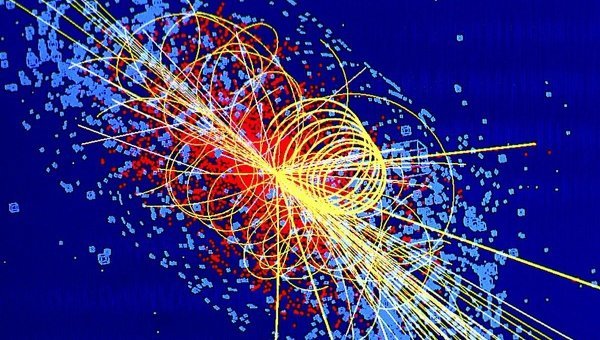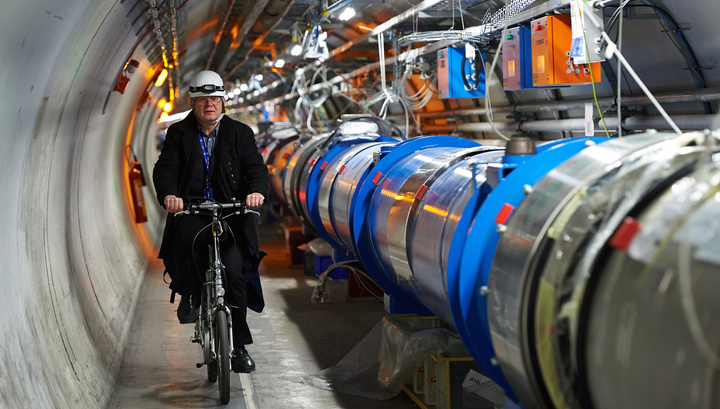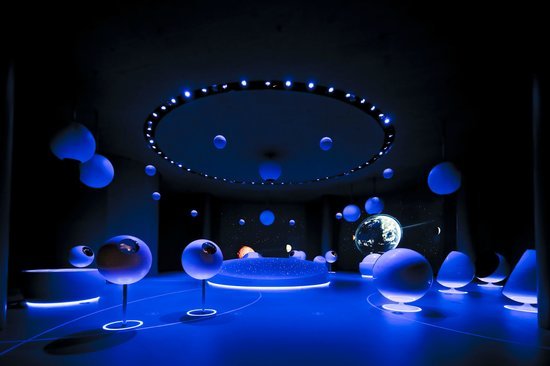European Center for Nuclear Research

Few who come to Geneva suspect that life in this city is in full swing (or rather, the fountain that has become its hallmark) not only in the city, but also deep underground. There, at a depth of hundreds of meters, over many kilometers of tunnels, beams of elementary particles, protons, rush at the speed of light, trying to shed light on the riddles of the origin of our Universe. CERN is a place that has changed the life of all mankind. It was here that the “World Wide Web” the Internet appeared, it was from this institution that everyone waited for the end of the world during the launch of the Hadron Collider, it is here that the world's largest High Energy Physics Laboratory is located.
History of creation
After the success of international organizations in resolving post-war problems, leading European physicists believed that such an organization was also necessary for physical experimental research. These pioneers were Raoul Dotri, Pierre Auger and Lev Kovarski in France, Edoardo Amaldi in Italy and Nils Bor in Denmark. In addition to combining European scientists, such an organization was called upon to share the increasing cost of physical experiments in high-energy physics among the member states. Louis de Broglie officially proposed the creation of a European laboratory at the European Cultural Conference (Lausanne, Switzerland, 1949).
')
The next push was made by the American Nobel laureate Isidor Rabi in June 1950 at the Fifth UNESCO General Conference in Florence (Italy), where he proposed “to help and support the creation of regional research laboratories to increase international cooperation.” At the intergovernmental meeting of UNESCO in Paris in December 1951, it was decided to establish a European Council on Nuclear Research. Two months later, 11 countries signed an agreement on the establishment of a provisional council, then the name CERN arose.
At the third session of the Provisional Council in October 1952, Geneva (Switzerland) was chosen to house the future laboratory. In June 1953, a referendum was held in the canton of Geneva, in which 2/3 of the voters agreed to the location of the science center. The Council Convention was gradually signed by 12 member states. On September 29, 1954, the agreement was signed by France and Germany, the European Organization for Nuclear Research was born, the Council fell apart, but the French acronym CERN was preserved. At the time of the opening, 12 countries were included in the organization, today representatives of 20 powers are working at CERN, including China, Japan, the USA and Russia. It employs 7 thousand people of 80 nationalities from 500 research centers.

The fantastic machine that discovered the Higgs boson
At the time when CERN was created, purely physical research focused on the understanding of the constituents of the atom, so the term “nuclear research” is used in the title. CERN's tasks also include the study of applied issues in various fields of science - medicine, pharmaceuticals, energy, high-tech research, and much more. In recent years, many loud discoveries have been made in the laboratories of the science center, one of which is the detection of a structureless particle - the Higgs boson. This discovery can turn all modern ideas about matter and undermine the status of the Standard Model of Elementary Particles - a popular quantum theory of the interaction of particles.

Computer simulation of the Higgs boson event
General information
The main site of CERN, in the foreground - Switzerland, in the background - France.

View inside the building, in which there are many offices of scientists working in the CMS and ATLAS collaborations.

CERN is located on the border of Switzerland and France, near Geneva. The territory of CERN consists of two main sites and several smaller ones. A large complex of buildings includes offices, laboratories, production facilities, warehouses, conference halls, living rooms, and dining rooms. The accelerator complex is located both on the surface (old Linac, PS accelerators) and underground at a large depth of up to 100 meters (more modern SPS, LHC).
The main site is an area near the Swiss town of Meyrin, the so-called site meyrin. Another main site is the territory near the French commune of Prevessen-Mohen - site Prévessin. Smaller areas are scattered in the immediate vicinity along an underground ring built for the LEP accelerator.
The CERN Education Agreement was signed in Paris on June 29 - July 1, 1953 by representatives of 12 European countries. The organization was formed on September 29, 1954. Currently, the number of member countries has increased to 20. In addition, some countries and international organizations have observer status. About 2,500 people permanently work at CERN, and about 8,000 more physicists and engineers from 580 universities and institutes from 85 countries participate in CERN international experiments and work there temporarily.
The annual contributions of the CERN member countries in 2008 are 1075.863 million Swiss francs (about 990 million US dollars).
In 2013, CERN was awarded the Niels Bohr Gold Medal - an award from the United Nations Educational, Scientific and Cultural Organization (UNESCO) - as an example of international cooperation of scientists from many countries of the world.
Computer technology at CERN
In addition to the discoveries in the field of physics, CERN became famous for the fact that the hypertext project World Wide Web was proposed within its walls. English scientist Tim Berners-Lee and Belgian scientist Robert Kayo, working independently, proposed in 1989 a project of linking documents through hypertext links to facilitate the exchange of information between research teams involved in conducting large experiments at the Large Electron-Positron Collider (LEP). Initially, the project was used only in the internal network of CERN. In 1991, Berners-Lee created the world's first web server, site and browser. However, the World Wide Web becomes truly worldwide only when the URI, HTTP and HTML specifications have been written and published. On April 30, 1993, CERN announced that the World Wide Web would be free for all users.

The very first site in the world
Even before the creation of the World Wide Web, at the beginning of the 1980s, CERN pioneered the use of Internet technology in Europe.
In the late 1990s, CERN became one of the centers for the development of a new computer network technology grid. CERN has joined the development of the GRID network, having decided that such a system will help preserve and quickly process the huge data flow that will appear after the launch of the Large Hadron Collider (LHC). Under the leadership of CERN, which invited the European Space Agency and European national scientific organizations as partners, the largest segment of the network of the system, DataGRID, is being created.
At present, CERN is part of a large grid project, Enabling Grids for E-sciencE (EGEE), and is also developing its own grid services. This is a special branch associated with the collider - LHC Computing Grid.

CERN is also one of two Internet traffic exchange points in Switzerland CINP (CERN Internet Exchange Point). It collects and uses its own distribution of the Linux operating system - Scientific Linux.
CERN employees Jason Stockman, Andy Yen and Wei Sun created the popular ProtonMail encrypted webmail service.

CERN Achievements
The achievements of CERN include:
- the first synchrocyclotron SC with an energy of 600 MeV (opened in 1957, closed in 1990);
- PS Proton synchrotron, 28 GeV (1959);
- proportional chamber (1968);
- the world's first proton-proton collider ISR (Intersecting Storage Rings), 62 GeV (opened in 1971, closed in 1984);
- proton supercollider SPS, 300 GeV, later - 400 GeV (1976);
- discovery of W-bosons and Z-bosons (1983);
- LEP collider, ring length 27 km, energy 45 GeV (launched in 1989, stopped in 2000 for conversion to LHC).
In 1990, CERN employee Tim Bernes-Lee created the HTTP protocol and laid the foundation of the World Wide Web. And in 1999, the construction of the Large Hadron Collider (LHC, Large Hadron Collider), the largest accelerator in colliding proton beams, was started. It was created in the LEP tunnel and tested in 2008.

Exposition "Universe of particles"
The European Center for Nuclear Research is also known as the preparatory center for scientific personnel. At its base, schools were created in which students and young graduate students can improve their knowledge in the study of particle physics, accelerator physics and computer technology. Internships, educational programs and courses conducted in the listener's native language, as well as summer schools are available for students, graduate students, school teachers and university professors.
After CERN “lit up” in the book “Angels and Demons” by Dan Brown, the organization became a place of pilgrimage for the mass of tourists. The management of the center could not refuse hospitality and allowed to conduct excursions. Guests are invited to visit the permanent exhibition “Universe of Particles”, and also to look at the ATLAS research laboratory, where one of the most high-profile experiments of the century is carried out - the search for hypothetical particles - from the Higgs boson, called the elements of dark matter. The stream of people who want to see the Hadron Collider is so large that it is better to book a tour in a few months.
Source: https://habr.com/ru/post/367187/
All Articles